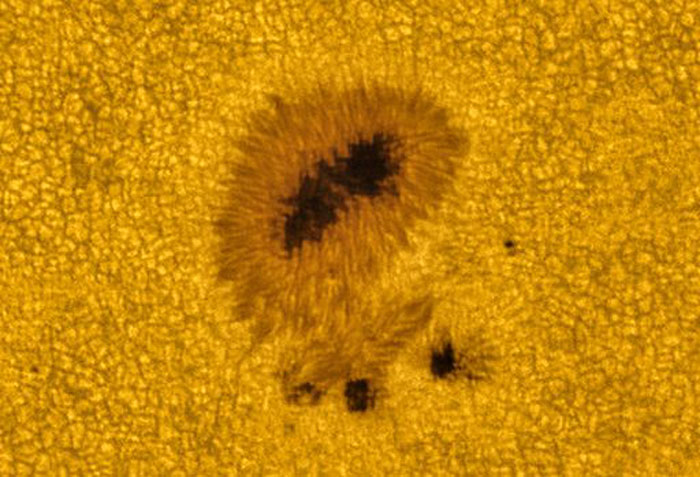.
2.03.2014
GROWING CHANCE OF FLARES: The face of the sun is peppered with spots. One of them in particular merits attention. AR1991 is rapidly growing, almost doubling its number of dark cores since yesterday.
.
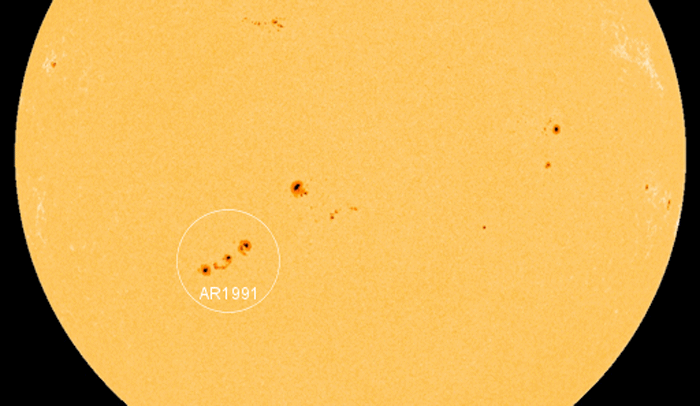
Foto: SDO /NASA
.
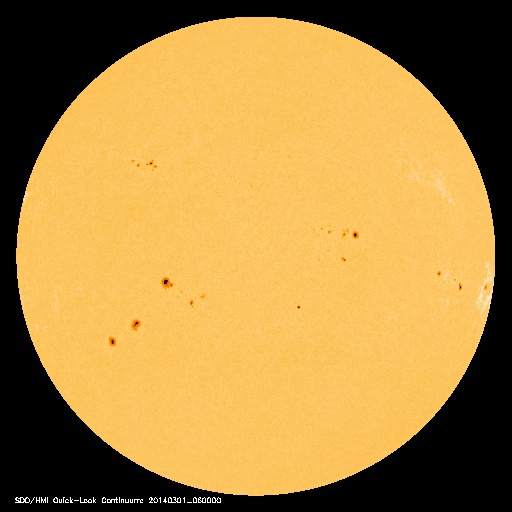
AR1991 has a 'beta-gamma' magnetic field that harbors energy for M-class solar flares. The rapid evolution of the sunspot could destabilize the field, making an eruption more likely. NOAA forecasters estimate a 70% chance of M-class flares and a 30% chance of X-flares on March 2nd.
Quelle: Spaceweather
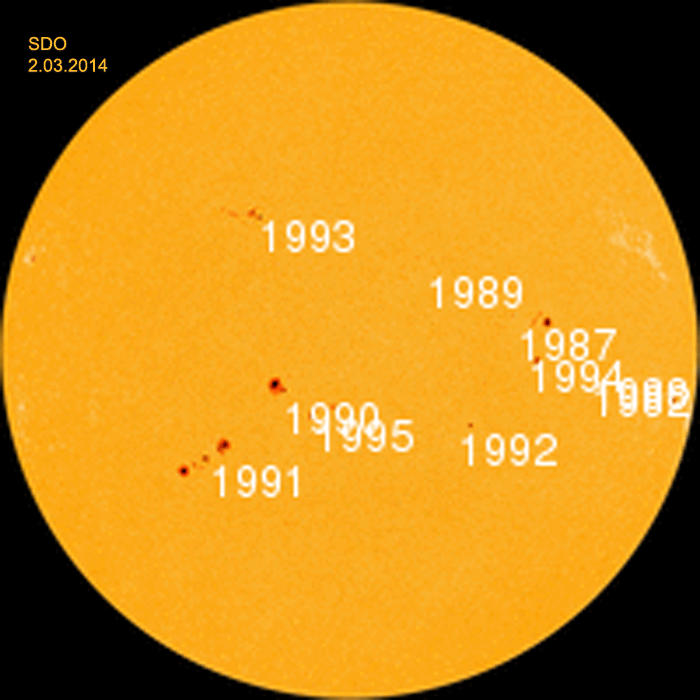
.
Spechtel-Alarm am Vormittag, da Nebelwolken abzogen und den Blick auf die Sonnenflecken ermöglichten. Nachfolgende Aufnahmen konnte ich dann anfertigen welche bedingt durch die abziehenden Nebelwolken mal mehr, mal weniger die Sonnenflecken freigaben:
.
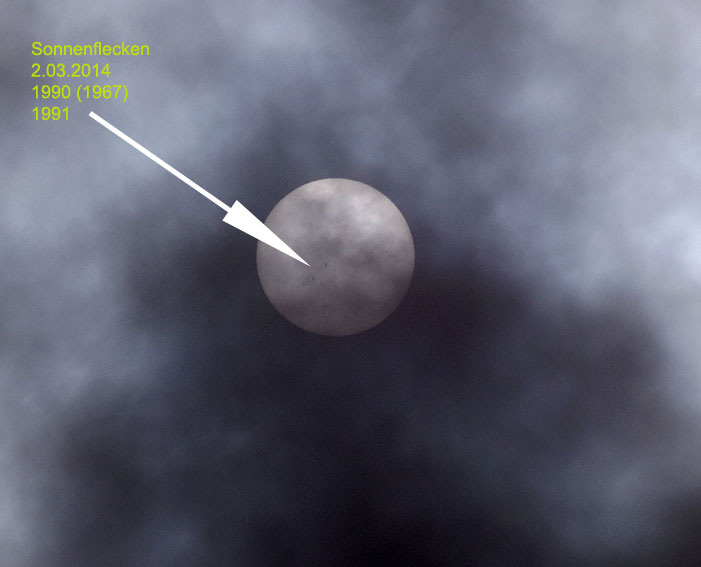
.
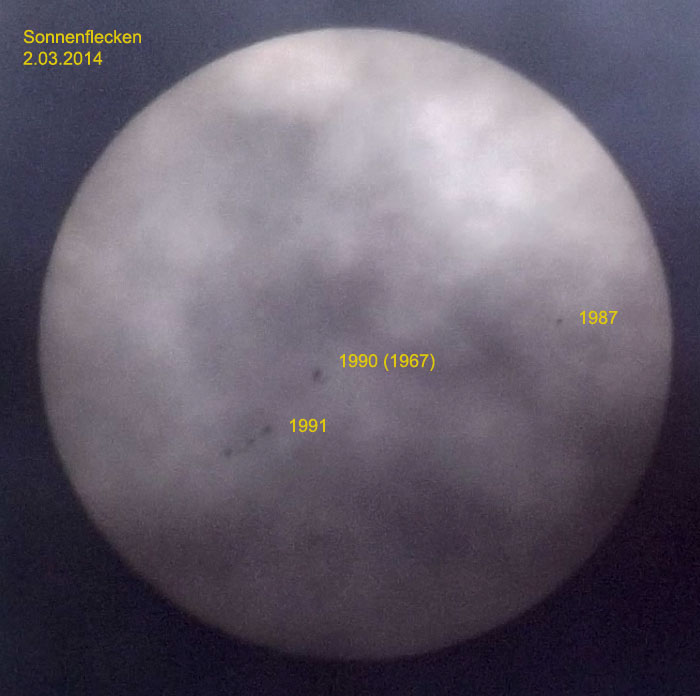
.
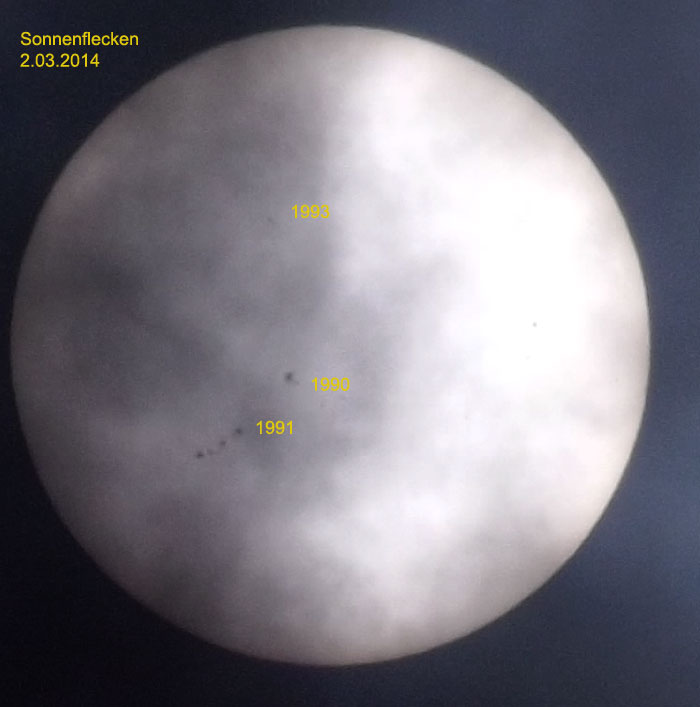
.
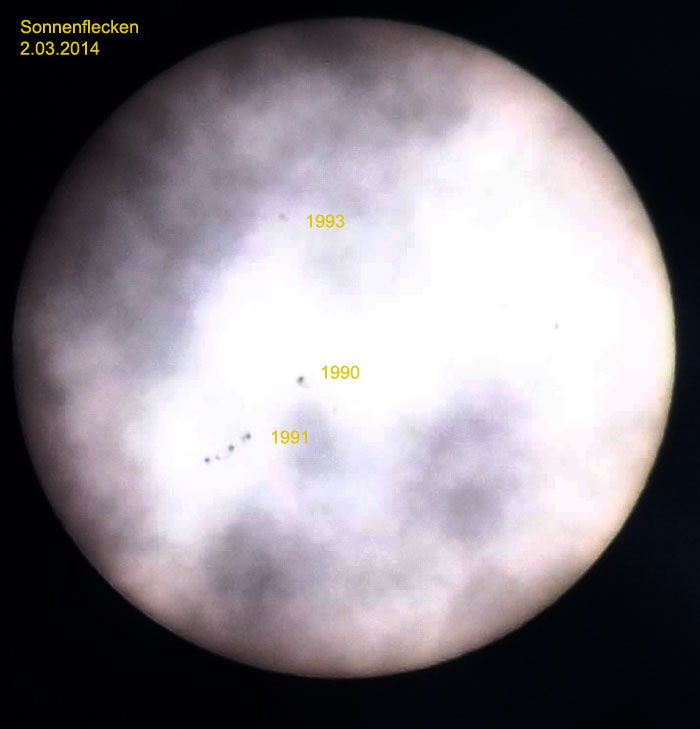
.
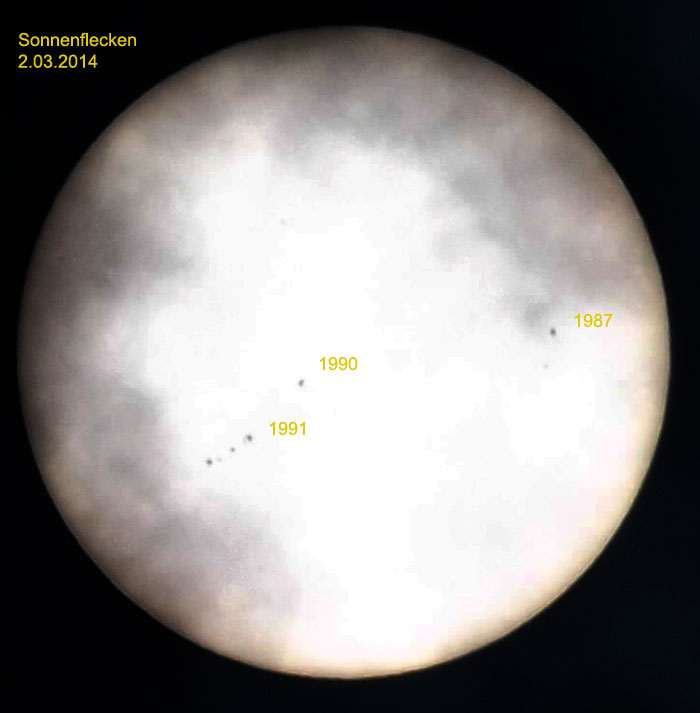
.
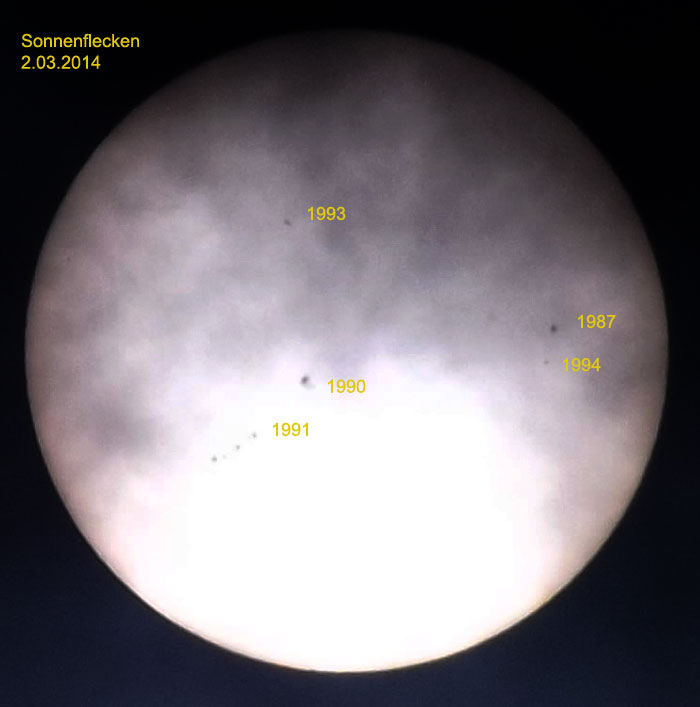
.

.
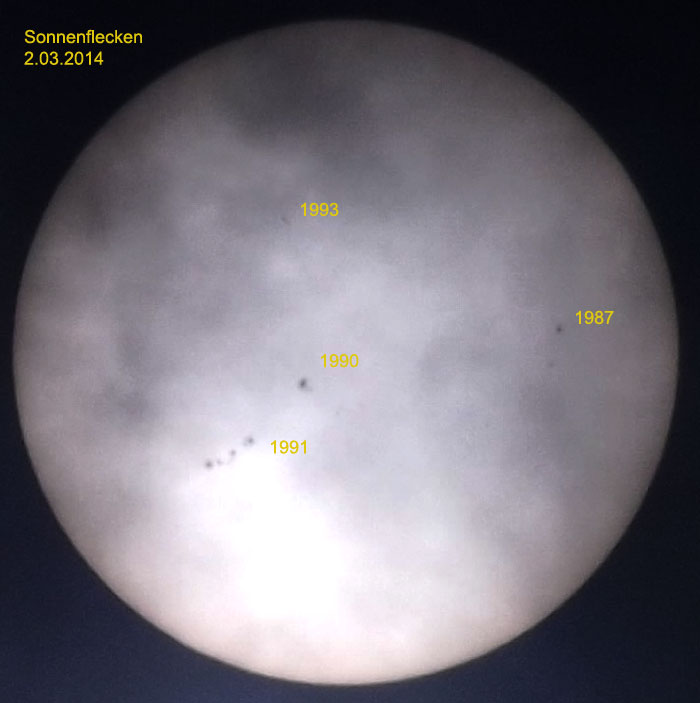
Fotos: ©-hjkc
.
Update: 5.03.2014
.
OLD SUNSPOT: The lifespan of a typical sunspot is two to three weeks. This one is about to turn three months:
.
